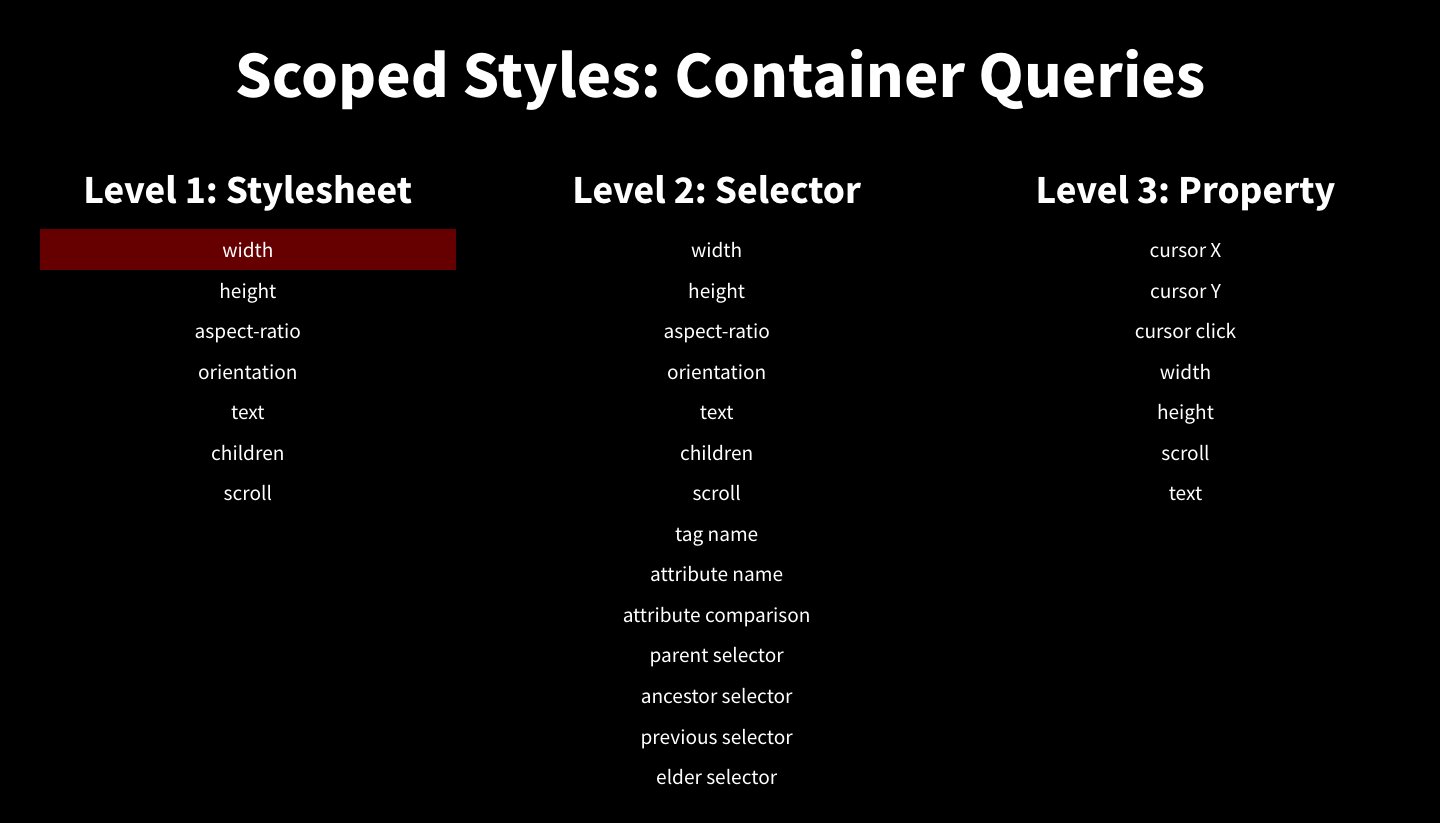Hi @trusktr! The way this spec is written you're right in your interpretation - the way EQCSS works is that as long as there is at least one element matching both the selector, and query conditions, that entire contained stylesheet is applied to the page.
@element .two {
p {}
}^ this query would mean: as long as at least one element in the document matches the selector .two, output the following stylesheet to the page: p {}.
While this can apply to elements on the page outside the scoped element(s), you could target only those <p> tags within elements with a class of .two by writing a stylesheet like this:
@element .two {
:self p {}
}However, this spec is from a year ago, and mirrors the features of the EQCSS plugin. There are people who think that the 'scoped stylesheet' ought to be limited only to those element(s) matching both the selector and query conditions and their children only.
Just yesterday I wrote up these notes for what I think the current thinking, and a more likely proposal for inclusion in CSS might be: https://gist.github.com/tomhodgins/a45e1b670ca7384326d3f1ac5b2d6ebc#scoped-stylesheets
However, the syntax described in yesterday's document doesn't have any polyfills for plugins written that behave that way yet!


I read the spec, but I can't understand what "scoping" means, or at least I don't understand what it is useful for.
For example, I would think that in the following example only the
pinside of.twois styled:https://codepen.io/anon/pen/MrmqeX
But instead what I see is something like "Because there exists an element with class
.twoanywhere on the page, then apply this style in global scope which applies to all elements on the page even if they are outside of the element with class.two".I was hoping that styles inside of the
@elementquery would apply only to elements that are found inside of the element(s) targeted with@element. This would be similar to nesting in SASS/LESS/Stylus.Is this not the case? Do you mean to rather do something like "If there is a
<video>element anywhere on the page, then style the whole page in some way"?